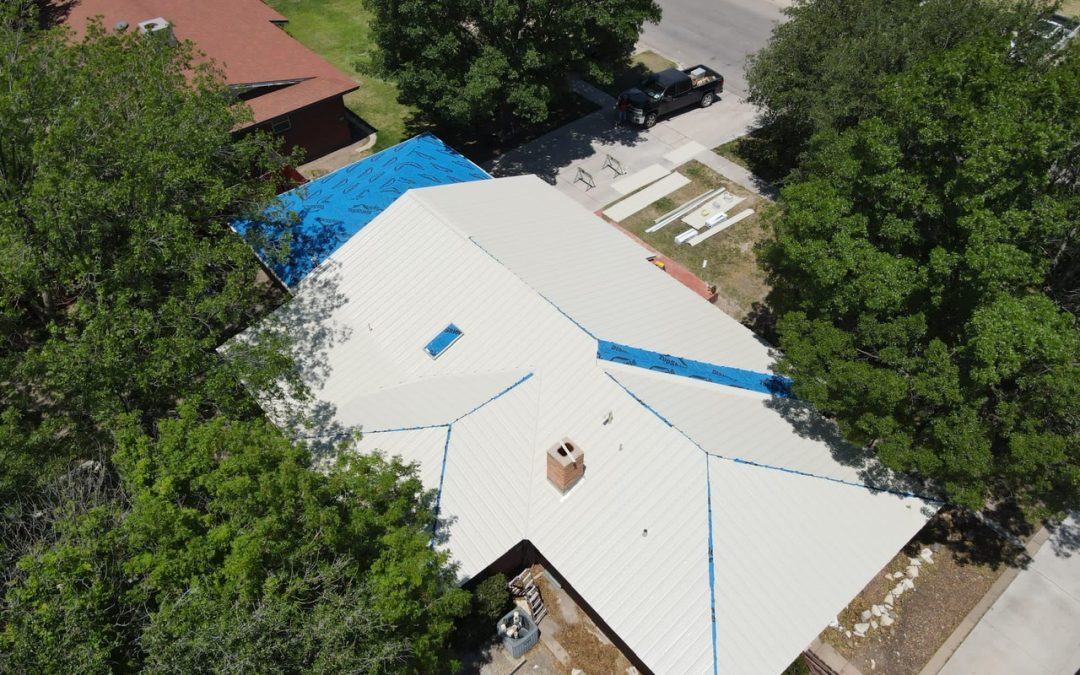Want to extend your roof’s lifespan and maintain its peak condition? Conduct metal roof maintenance to make sure your roof remains in top-notch condition.
Regularly cleaning debris and dirt as well as getting a professional inspection can keep your roof in great shape. In addition, to keep your roof strong, this will improve the aesthetics of your home and make it look pleasant to the eye.
Looking for more maintenance tips? Read this blog as we are sharing more strategies to increase the longevity of your home’s roof. Let’s begin!
Metal Roof Maintenance Tips
Regular maintenance prevents leaking, prolongs the roof’s life, and maintains its appearance. It also improves energy efficiency and boosts your house’s value, benefiting your enjoyment and potential resale. So, follow these care guidelines:
Gutter and Downspout Maintenance
Clean gutters and downspouts are crucial for maintaining a metal roof. They serve as a drainage system, directing rainwater away from your roof and house. Clogs can prevent proper water flow, potentially causing interior damage. To get rid of clogs, you require a ladder, a cleaning tool, a hose, a plumber’s snake, and a high-pressure hose attachment.
Securely position your ladder near the gutter and downspout. Put on gloves and use a small tool to clear debris, starting from the higher end. Rinse with a hose and use a plumber’s snake or high-pressure attachment to unblock downspouts.
Trim Tree Branches
Trim the tree branches hanging over your roof, as they can cause a lot of damage to your metal roof. They can scratch, dent, and potentially lead to rusting by stripping away the protective layer.
Another thing to watch out for is the leaves and twigs that fall from the trees. They can get stuck in your gutters and pipes, making rainwater seep into your home.
If a big storm comes to your area, these overhanging branches can break and fall onto your roof. This can cause a lot of damage to the roof and even the whole structure of your home. That’s why it’s important to trim them regularly.
Clear Roof Debris
While metal roofs don’t require frequent cleaning, they can accumulate dirt, especially after a storm. This buildup can lead to leaks, scratches, and dents, weakening the metal and potentially causing rust.
Begin by gently sweeping away loose debris from the top down using a soft broom or brush. Avoid using anything abrasive to prevent scratching the metal surface. Once loose debris is cleared, use a garden hose with a nozzle to remove any remaining dirt, directing the water downwards to prevent seepage under the metal panels.
A mild cleaner and a soft-bristled brush can be used for stubborn spots or stains for gentle scrubbing. Remember to thoroughly rinse the area with water once you have finished scrubbing.
Seal Gaps for Metal Roof Protection
To keep your metal roof in good shape and avoid expensive water damage, it’s crucial to seal any gaps, cracks, or loose seams. These openings can let water sneak in, leading to problems like mold and rot. To do this, inspect your roof carefully, paying attention to spots where metal panels meet.
Also, check around any roof features like vents, chimneys, or skylights for potential gaps. When it comes to sealing loose seams, you have a few options. Roofing cement is ideal for sealing gaps in standing seam metal roofs, and it creates a strong, long-lasting seal.
Silicone caulk is another option because it is a flexible, waterproof sealant that can effectively seal small cracks around roof penetrations. You can choose the option that fits your roof, but they are both great to protect your roof from water damage.
Check for Rust
Exposure to moisture and humid air can cause rust in the metal roofs and shingles. However, you can use special coatings made from materials like galvanized steel and aluminum to protect your roof. If the rust is not addressed, it weakens the roof’s ability to keep the home safe from natural elements.
You can eliminate dirt or dust built up by using gentle cleaners and soft brushes. If you’re unsure what to do, asking a roofing expert for advice is always a good idea. They can help you keep your metal roof in great shape.
To inspect your roof from the outside, you can use a cherry picker or a ladder to reach it. Rust tends to develop near the screws on the roof or where the sheets overlap, so concentrate on these points.
Check Your Metal Roof’s Paint
It’s important to repaint your metal roof as it acts like a preventive barrier against rain. Over time, the sun, rain, and wind can make the paint look old. Putting on a new layer of paint makes it look good and helps protect it from the weather.
You can choose from multiple paint types, such as acrylic, which is quick-drying and easy to apply, latex which is easy to clean, and oil-based which is strong and ideal for tough weather. Choose based on your location and home’s color theme to get beautiful and long-lasting results.
Regular Cleaning for Your Metal Roof
Although metal roofs are known for their durability, it’s important to give them some care occasionally. Over the months, dirt, grime, and other pollutants can accumulate, impacting the roof’s appearance and performance.
To keep it looking its best, use a non-abrasive cleaner recommended by the manufacturer. Scrub with a soft brush and wash with a low-pressure setting pressure washer for a thorough yet gentle clean. Steer clear of harsh chemicals or abrasive tools that can harm the surface.
Regular checks and cleaning every 2-3 years are crucial for maintaining your roof’s appearance and performance, ensuring it stays in excellent shape.
Wrapping Up
Regular maintenance like inspections, professional checks, debris clearing, and quick fixes are essential for a lasting metal roof. This upkeep prevents leak issues, extends the roof’s life, and maintains its appearance. It also improves energy efficiency and boosts home value, benefiting present enjoyment and potential resale.
